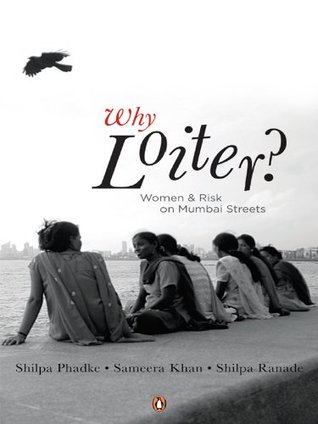More on this book
Community
Kindle Notes & Highlights
Read between
October 6 - November 21, 2024
not only are the poor increasingly sequestered in ghettos but their every attempt to use public space for survival purposes—for instance, by the homeless or street vendors—is criminalized.
Besides demonstrating that they belong in private spaces, women also have to indicate that their presence in public space is necessitated by a respectable and worthy purpose. Further, this purpose has to be visibly demonstrated to the effect that when any woman accesses public space, she has to overtly indicate her reason for being there.
The respectable middle-class woman is central to any discussion on safety and public space in the city. However, the demand for respectability means that she can only have conditional access to public space. The need to demonstrate respectability in her everyday actions and movements and the focus on sexual safety instead of real safety, actually denies middle-class women rights to public space. Furthermore, the insistence on respectability excludes other women who are deemed ‘unrespectable’ from staking any claim whatsoever to public space.
Women also use religion, and more specifically, religious activities and functions for which it is relatively easy to get family and societal sanction, as opportunities to enhance their access to the public. The demonstration of devotion and religiosity becomes an important marker of respectable womanhood.
Thus, rather than empowering women, the presence of insiders (and the pressure to demonstrate respectability: ‘good women ignore sexual harassment’) can actually prevent women from acting in their own defence. This is often tied to the notion that women invite trouble or are in some way to blame when harassment takes place. Creating an environment where women are forced to manufacture respectability might actually reduce women’s capacity to defend themselves.
What we might demand then is an equality of risk—that is not that women should never be attacked, but that when they are, they should receive a citizen’s right to redress and their right to be in that space should remain unquestioned.
if public facilities were provided 24/7 it would send the message that women are expected to be in public space anywhere, any time. For example, in Mumbai, the presence of reserved compartments for women in local trains clearly enshrines their right to be in that public space.
This tunnel vision of the city is unfriendly to women at multiple levels. For one, zoning spaces on the basis of use into residential and commercial areas is detrimental to women’s mobility. Our research shows that women have more access to public space in mixed-use areas, where shops and business establishments are open late into the night, ensuring activity at all times. Second, vertical development often means a detachment from the ground. In comparison to low-rise horizontal urban forms, the public spaces of a vertical city are less friendly and safe, particularly for women.65 And third,
...more
The idea that upper-or middle-class localities are safer for women is not located in any objective understanding of safety. This perception has its roots in a city that is rapidly becoming fragmented on class and community terms in the quest for clean sanitized environments. The real reason why they are perceived to be safer is the strong desire among the upper and middle classes to differentiate their own area as safe and not like lower-class spaces.
entry of rich women into public space is really a misnomer. What they actually do is move from one private space to another, facilitated by the air-conditioned tinted private glass bubble that is a luxury car. Rich girls might appear to be out there but actually, they do not access public space at all.
Business districts are particularly unfriendly to women because the streets become empty at night. A headcount of men and women at different times in the day showed that the streets of Nariman Point have one of the lowest female: male ratios in the city.
As against Nariman Point or Ballard Estate, where professional women might wield their class as a shield, the industrial area is clearly masculine, making middle-class women even more out of place than they would be elsewhere. This mix of class and gender in the workplace also determines which professions are seen as respectable and therefore desirable for women.
While we must lobby for an infrastructure that will make it possible for us to take risks as citizens, at the same time, the demand for infrastructure that reduces risks should not provide the grounds to indict those who choose to take other kinds of risks not dependent on infrastructure. The presence of well-lit streets in the city should not mean that women found in dark corners should be deemed unrespectable or blamed if they are attacked.


